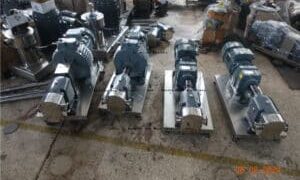Imagine building a house of cards – a precarious tower reaching for the sky, a testament to your architectural ingenuity. But what if a rogue breeze threatened to send it all crashing down? Building design, especially with fire safety, can sometimes feel like that – a delicate balance between creative vision and the harsh reality of “don’t let it burn down.” But fear not! There’s a secret weapon in your arsenal: the Performance-Based Design Brief.
Think of it as a choose-your-own-adventure story for fire safety. Instead of a pre-written script full of dry regulations, this brief lets you collaborate with a team of fire engineering wizards (yes, they exist!) to craft a design that’s both safe and spectacular.
HOW DOES THIS COLLABORATIVE COMPLIANCE HAPPEN?
Picture a brainstorming session fueled by imagination and a healthy dose of coffee. You, the architect, the client, and the fire engineer huddle around a table, tossing around ideas like popcorn kernels. “We want a building with soaring ceilings and lots of natural light!” you declare. The fire engineer, chimes in, “No problem! Let’s incorporate strategically placed firewalls and advanced smoke control systems to keep everyone safe and the design dazzling.”
Based on these discussions, the Performance-Based Design brief takes shape. It’s your roadmap to fire safety nirvana, outlining measurable goals for things like fire-resistant materials, smoke control systems that work like a charm, and clear escape routes that would make Houdini proud. This also considers the building’s layout, its purpose (think bustling art gallery versus cozy cabin), and even the surrounding environment.
WHAT GETS INCLUDED IN A REPORT?
Ever dream of designing a building that stuns the eye and stirs the soul? But then reality sets in – fire safety regulations, building codes, a seemingly endless list of “don’ts” that can stifle your creative spark. What if there was a way to bridge the gap between artistic vision and fire safety necessity? Enter the Performance-Based Design Brief.
Think of it as a collaborative blueprint, not a restrictive rulebook. It lets you ditch the fire drill and embark on a design adventure with a team of fire engineering experts. Together, you’ll craft a design about fire safety in your structure which prioritizes safety while keeping your creative vision alive.
Let’s peek inside the PBDB toolbox …
Project Overview: This is like the “About Us” section of your fire safety brief. It outlines the project’s purpose, size, and timeline.
Stakeholder Roles: Just like in a successful team, everyone has a designated role. The PBDB defines who’s responsible for what, from the fire engineer to the architect, client, and any consultants involved.
Performance Goals: This is the heart of this brief. Here, you define the measurable objectives for fire safety – a community center where clear escape routes and effective smoke control systems allow for swift evacuation, for example.
Design Considerations: This section goes beyond just technical details. It might include the building’s architectural style (think traditional brick construction versus modern glass facades), accessibility needs for anyone using the space, and even sustainability goals like using eco-friendly fire-resistant materials.
THE BEST PRACTICES IN PERFORMANCE-BASED DESIGN BRIEFS
This isn’t your run-of-the-mill design brief. It’s more like a recipe for building safety. It includes everything from fire hazard assessments and evacuation plans to smoke control strategies and fire-resistant materials. The goal is to create a comprehensive roadmap for designing a building that can withstand the heat.
Here are some best practices for whipping up a top-notch brief:
Know Your Ingredients: Start by understanding the unique fire safety challenges of the project, whether it’s a high-rise office building or a cozy residential home. Tailor your approach accordingly.
Set Clear Objectives: Define specific performance objectives for fire safety, such as evacuation times, smoke management, and structural fire resistance. These become your guiding stars throughout the design process.
Collaborate Like a Boss: Fire safety is a team sport. Bring together experts from various disciplines to ensure a well-rounded approach to designing for fire safety.
Think Outside the Box: Don’t be afraid to get creative with your design solutions.
Test, Rinse, Repeat: Once the design is complete, don’t just dust off your hands and call it a day. Test your design using advanced fire simulation software, gather feedback from stakeholders, and iterate as needed to fine-tune your approach.
CONCLUSION
The PBDB is more than just a compliance document. It’s a powerful tool that fosters creativity, innovation, and ultimately, a building design that prioritizes the well-being of everyone involved. By focusing on achieving specific fire safety goals instead of following rigid rules, it opens doors to exciting design possibilities. Imagine a community center that uses clever compartmentalization to limit fire spread while maintaining a stunning open floor plan that promotes social interaction.
So, the next time you embark on a building project, ditch the one-size-fits-all approach and embrace the collaborative spirit of the Performance-Based Design Brief. After all, the best buildings are often the ones that are designed not just for aesthetics or functionality, but for safety as well. They are shaped around the needs of the people who will use and experience the space. And when it comes to fire safety, a little collaborative planning can go a long way in ensuring everyone gets to enjoy the building for years to come.






























